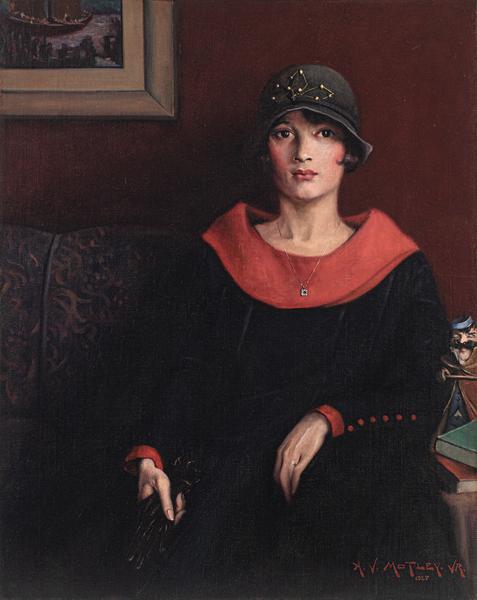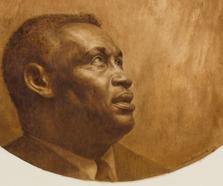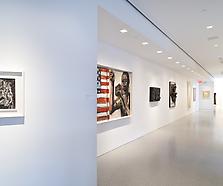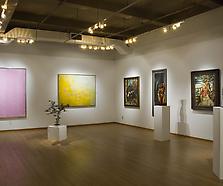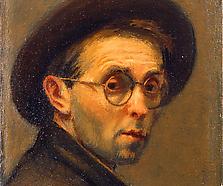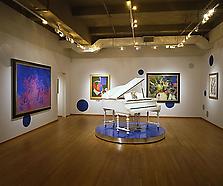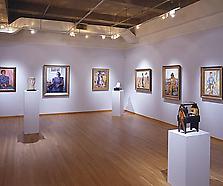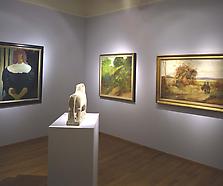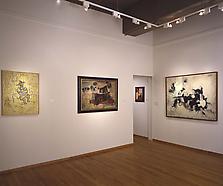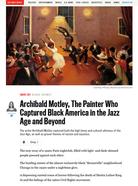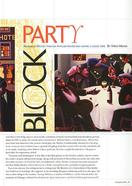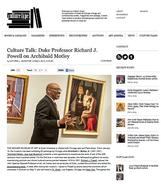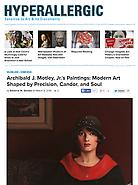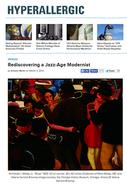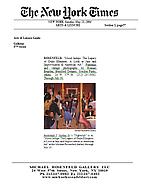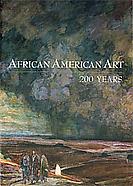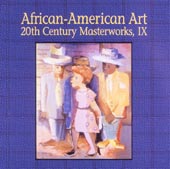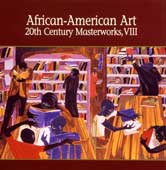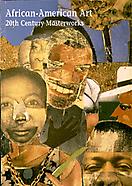1939
Contemporary Negro Artists, Baltimore Museum of Art, Baltimore, MD
1940
Exhibition of the Art of the American Negro (1851-1940), Tanner Art Galleries, Chicago, IL; traveled to Library of Congress, Washington, DC
1968
Invisible Americans: Black Artists of the 30’s, The Studio Museum in Harlem, New York, NY
1978
New York/Chicago: WPA and the Black Artist, Studio Museum in Harlem, New York, NY
1990
Against the Odds: African American Artists and the Harmon Foundation, The Newark Museum, Newark, NJ; Gibbes Museum of Art, Charleston, South Carolina; Chicago Cultural Center, Chicago, IL
1991
The Walter O. Evans Collection of African American Art, The Beach Institute African-American Cultural Center / King-Tisdell Cottage, Savannah, GA; Hammonds House Galleries and Resource Center (now Hammonds House Museum), Atlanta, GA; Museum of Fine Arts, St. Petersburg, FL; Boston University Art Galleries, Boston University, Boston, MA; Main Gallery, Arts Consortium of Cincinnati, Cincinnati, OH; UTSA Institute of Texan Cultures, University of Texas at San Antonio (UTSA), San Antonio, TX; Canton Art Institute (now Canton Museum of Art), Canton, OH; Delaware Art Museum, Wilmington, DE; University of Hawai‘i at Mānoa Art Gallery, University of Hawai‘i at Mānoa, Honolulu, HI; Flint Institute of Arts, Flint, MI; Kalamazoo Institute of Arts, Kalamazoo, MI; Asheville Art Museum, Asheville, NC; Montgomery Museum of Fine Arts, Montgomery, AL; Senator John Heinz Pittsburgh Regional History Center, Pittsburgh, PA; Cheekwood Museum of Art, Cheekwood Estate & Gardens, Nashville, TN; Huntington Museum of Art, Huntington, WV; Walter Anderson Museum of Art, Ocean Springs, MS; Meadows Museum of Art at Centenary College of Louisiana, Shreveport, LA; Columbia Museum of Art, Columbia, SC; The Museum of Art/Tallahassee, Tallahassee, FL; Museum of Arts and Sciences, Macon, GA; Henry Ford Museum (now The Henry Ford), Dearborn, MI; Gibbes Museum of Art, Charleston, SC; Spelman College Museum of Fine Art, Spelman College, Atlanta, GA; Tyler Museum of Art, Tyler, TX; Morris Museum of Art, Augusta, GA; Fort Wayne Museum of Art, Fort Wayne, IN; Memorial Art Gallery, University of Rochester, Rochester, NY; Huntsville Museum of Art, Huntsville, AL; Mississippi Museum of Art, Jackson, MS
1994
African-American Art: 20th Century Masterworks, Michael Rosenfeld Gallery, New York, NY
The Harmon and Harriet Kelley Collection of African American Art, San Antonio Museum of Art, San Antonio, TX; El Paso Museum of Art, El Paso, TX; Michael C. Carlos Museum, Emory University, Atlanta, GA; Butler Institute of American Art, Youngstown, OH; Hunter Museum of Art, Chattanooga, TN
1997
African-American Art: 20th Century Masterworks, IV, Michael Rosenfeld Gallery, New York, NY; Fisk University Galleries, Nashville, TN
Rhapsodies in Black: Art of the Harlem Renaissance, Hayward Gallery, London; Arnolfini, Bristol; Mead Gallery, University of Warwick, England; M.H. de Young Memorial Museum, San Francisco; The Corcoran Gallery of Art, Washington, DC
Revisiting American Art: Works from the Collections of Historically Black Colleges and Universities, Katonah Museum of Art, Katonah, NY
1999
African American Art in Chicago, 1900-1950, Robert Henry Adams Fine Art, Chicago, IL
2001
African-American Art: 20th Century Masterworks, VIII, Michael Rosenfeld Gallery, New York, NY; Texas Southern University Museum, Houston, TX
2002
African-American Art: 20th Century Masterworks, IX, Michael Rosenfeld Gallery, New York, NY
2003
Challenge of the Modern: African-American Artists 1925-1945, The Studio Museum in Harlem, New York, NY
2004
Mood Indigo: The Legacy of Duke Ellington – A Look at Jazz and Improvisation in American Art, Michael Rosenfeld Gallery, LLC, New York, NY
2005
Eye Contact: Painting and Drawing in American Art, Michael Rosenfeld Gallery, LLC, New York, NY
2008
African American Art: 200 Years, Michael Rosenfeld Gallery, LLC, New York, NY
2009
Il Secolo del Jazz: Arte, Cinema, Musica e Fotografia da Picasso a Basquiat (The Jazz Century: Art, Cinema, Music and Photography from Picasso to Basquiat), Museo di Arte Moderna e Contemporanea, Rovereto, Italy; Museé du quai Branly, Paris, France; Centro de Cultura Contemporànea, Barcelona, Spain
Harlem Renaissance, Oklahoma City Museum of Art, Oklahoma City, OK
2013
INsite/INchelsea: The Inaugural Exhibition, Michael Rosenfeld Gallery LLC, New York, NY, December 18, 2012-March 9, 2013
2014
Conversations: African and African American Artworks in Dialogue from the Collections of the Smithsonian National Museum of African Art and Camille O. and William H. Cosby Jr., Smithsonian National Museum of African Art, Washington, DC
2016
The Color Line: African American Artists and the Civil Rights in the United States, Musée du Quai Branly, Paris, France
2018
Posing Modernity: The Black Model from Manet to Matisse and Beyond, Miriam and Ira D. Wallach Art Gallery, Columbia University, New York, NY
Something to Say: The McNay Presents 100 Years of African American Art, McNay Art Museum, San Antonio, TX
Histórias Afro-Atlânticas, Museu de Arte de São Paulo (MASP) and Instituto Tomie Ohtake, São Paulo, Brazil
Truth & Beauty: Charles White and His Circle, Michael Rosenfeld Gallery LLC, New York, NY
2019
Alvaro Barrington: Artists I Steal From, Galerie Thaddaeus Ropac, London, England
Out of the Crate: New Gifts & Purchases, Detroit Institute of Arts, Detroit, MI
Self in the City: Highlights from the Collections of the Hudson River Museum and Art Bridges, Hudson River Museum, Yonkers, NY
The Whitney's Collection: Selections from 1900 to 1965, Whitney Museum of American Art, New York, NY
Detroit Collects: Selections of African American Art from Private Collections, Detroit Institute of Arts, Detroit, MI
2020
Black Histories, Black Futures, Museum of Fine Arts, Boston, Boston, MA
2021
Black American Portraits, Los Angeles County Museum of Art, Los Angeles, CA
Afro-Atlantic Histories, curated by Kanitra Fletcher; Museum of Fine Arts, Houston, TX; National Gallery of Art, Washington, DC; Los Angeles County Museum of Art, Los Angeles, CA

